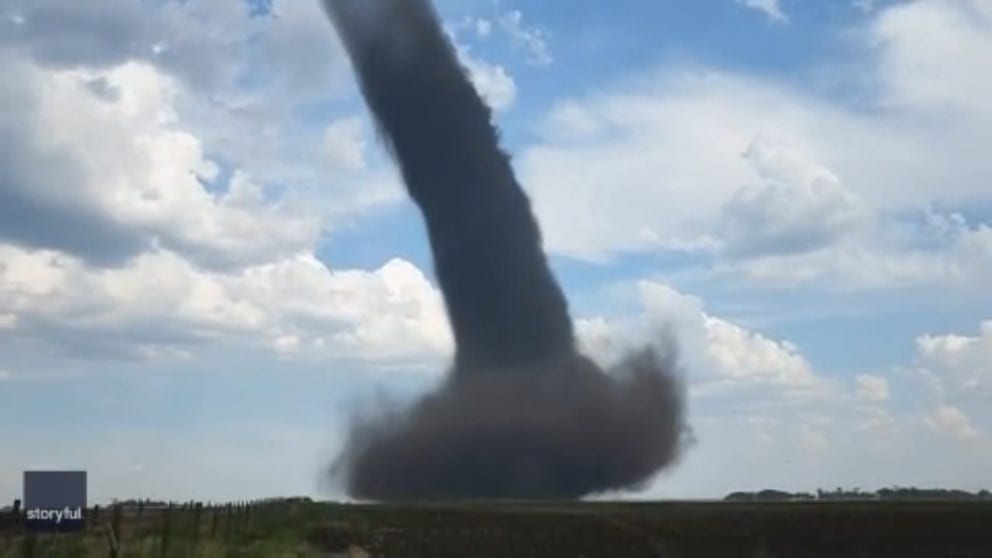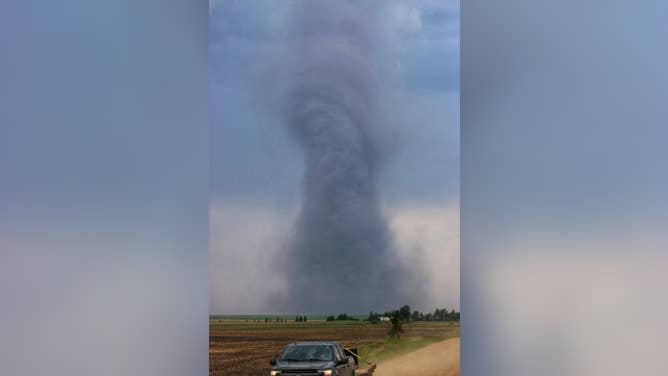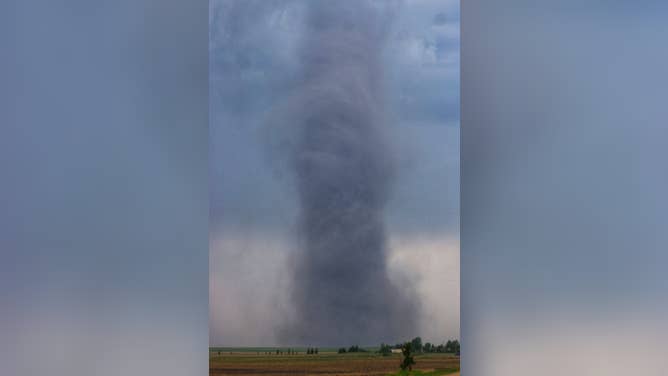Watch: Incredible close up experience with landspout tornado in southern Alberta
A massive landspout tornado formed in an Alberta field and put on a spectacular show for nearby photographers.
Massive landspout tornado sweeps Alberta farmland
Video recorded by freelance reporter Kyle Brittain shows the well-formed vortex moving through a field in Stettler. (Video courtesy: Kyle Brittain via Storyful)
BOTHA, Alberta – Photographers captured some incredible scenes of landspout tornadoes across central Alberta on Wednesday.
Kyle Brittian got up close with a well-formed vortex that moved through a field in Stettler.
WHAT'S THE DIFFERENCE BETWEEN A TORNADO AND A LANDSPOUT?
Meanwhile, photographer Brittany Proudfoot captured images of a landspout tornado just down the highway near the small town of Botha.
One photo shows the dark, gray-blue twister behind a line of trees and homes.
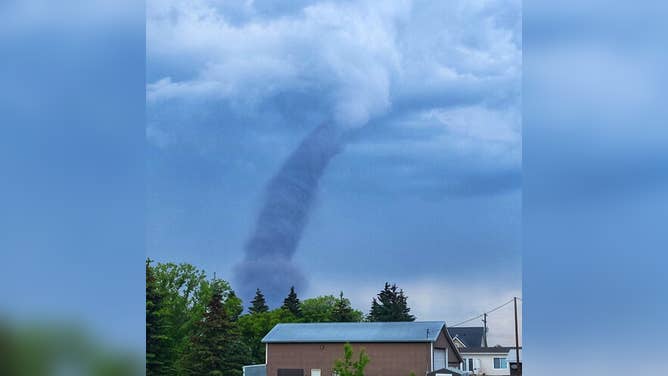
Tornado near Botha, Alberta, Canada. May 31, 2023.
(Brittany Proudfoot / Facebook / FOX Weather)
In another photo, the large twister spins in a field, dwarfing a white home near a dirt road.
The tornado was confirmed by Environment Canada, which stated that the twister occurred just north of Botha at approximately 4:47 p.m. MT on Wednesday.
The agency received reports of nickel to golf ball-sized hail but no reports of damage as of Wednesday evening.
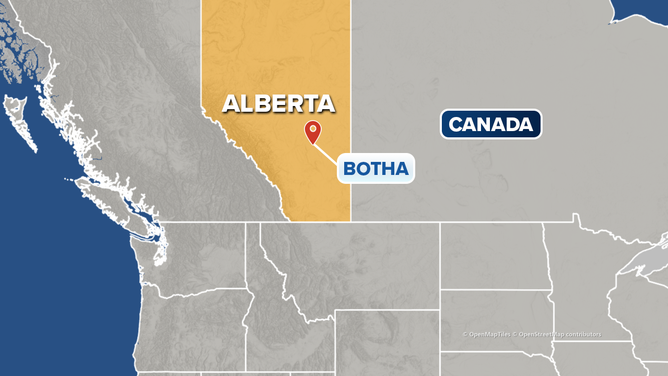
Map showing location of Botha, Alberta, Canada.
(FOX Weather / FOX Weather)
Landspouts are a little different than traditional tornadoes
Landspouts are similar in appearance to tornadoes, but are formed by different meteorological events.
While traditional tornadoes are spawned from supercell thunderstorms, landspout occur when you have colliding winds at the surface that will begin to make their own vortex, and then a developing thunderstorm passes overhead.
Updrafts from the passing thunderstorm will pull this rotating vortex skyward and make a tornado-like appearance.
Landspouts tend to be pretty weak compared to traditional tornadoes but can still be strong enough to cause damage and warrant caution.
Canada second-most prone tornado country
Outside of the U.S., Canada likely sees more tornadoes than any other country, according to Public Safety Canada. They noted that the areas most often affected by tornadoes are southwestern Ontario and parts of the southern Prairies, where Botha is located.
Public Safety Canada added that while tornadoes can occur any time of the year, most of the tornadoes occur in June and July.
